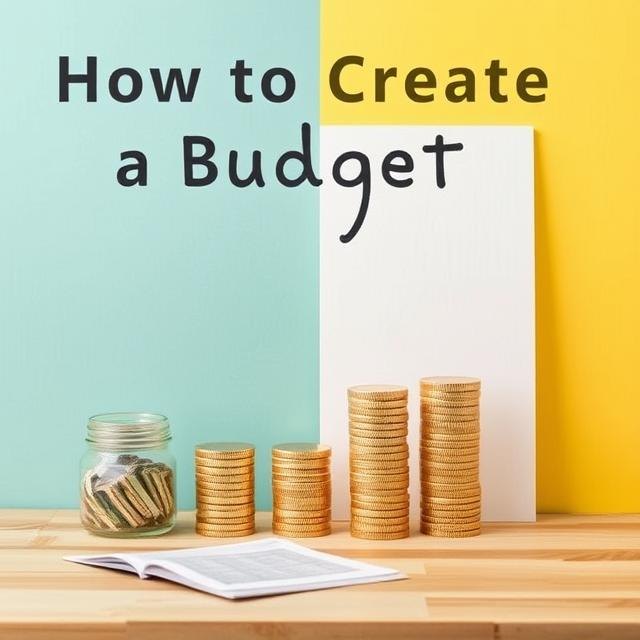How to Create a Budget That Works
Let’s face it—budgeting isn’t exactly glamorous. But if you’ve ever wondered why some people seem to have their finances in order while others struggle, the answer often lies in one simple habit: how to create a budget that works . A budget is like a GPS for your money—it helps you navigate toward your financial goals without getting lost along the way.
In this article, we’ll walk you through actionable steps to design a budget tailored to your lifestyle. Whether you’re saving for a dream vacation, paying off debt, or building an emergency fund, these strategies will set you on the right path.
Why Learning How to Create a Budget Is Essential
Before diving into the details, let’s talk about why mastering how to create a budget is so critical. Without a clear plan, it’s easy to overspend, lose track of expenses, and fall short of your financial goals. A budget gives you control over your money instead of letting it control you.
For instance, did you know that nearly 60% of Americans live paycheck to paycheck? Many of them could benefit from learning how to create a budget that works . If you’re looking for inspiration, check out our related article 10 Habits of Financially Successful People .
Step 1: Track Your Income and Expenses
The first step in learning how to create a budget is understanding where your money comes from and where it goes. Start by listing all sources of income—your salary, freelance earnings, side hustles, etc. Then, track every single expense for at least a month.
Apps like Mint or YNAB (You Need A Budget) make this process easier, but even pen and paper work fine. Categorize your spending into essentials (rent, utilities, groceries) and non-essentials (dining out, entertainment).
For government-backed tools on tracking expenses, visit MyMoney.gov .
If you need guidance on categorizing expenses, read our internal article Smart Ways to Categorize Your Spending .
Step 2: Set Clear Financial Goals
A budget without goals is like a ship without a destination. When figuring out how to create a budget that works , define both short-term and long-term objectives.
Short-term goals might include saving $500 for holiday gifts or cutting back on dining out. Long-term goals could involve buying a house, retiring early, or paying off student loans. Having specific targets keeps you motivated and focused.
Step 3: Use the 50/30/20 Rule
One popular method for how to create a budget is the 50/30/20 rule. Here’s how it works:
- 50% for Needs : Allocate half your income to essentials like housing, food, and transportation.
- 30% for Wants : Spend up to 30% on discretionary items like hobbies, travel, and dining out.
- 20% for Savings/Debt Repayment : Dedicate the remaining 20% to building savings or reducing debt.
This framework simplifies the process of how to create a budget that works while ensuring balance between needs, wants, and future security.
For more detailed advice, explore our article Mastering the 50/30/20 Budgeting Method .
Step 4: Automate Your Savings
Automation is your best friend when it comes to sticking to a budget. Set up automatic transfers to your savings account as soon as you receive your paycheck. This ensures you prioritize saving before spending.
Many experts recommend building an emergency fund covering 3–6 months’ worth of living expenses. For insights on emergency funds, check out this Wikipedia page .
Internally, don’t miss our guide How to Build an Emergency Fund Painlessly .
Step 5: Review and Adjust Regularly
Creating a budget isn’t a “set it and forget it” task. Life changes—so should your budget. Every month, review your spending patterns and adjust accordingly. Did you overspend on dining out? Find areas to cut back next month.
This flexibility is key to how to create a budget that works in real-world scenarios.
Common Mistakes to Avoid When Creating a Budget
Even with good intentions, people often trip up when trying how to create a budget . Common mistakes include underestimating expenses, failing to account for irregular bills, and being too rigid. Remember, a budget should guide—not restrict—you.
Real-Life Examples of Effective Budgeting
Take Sarah, for example. She learned how to create a budget after realizing her credit card debt was spiraling out of control. By tracking her expenses and automating payments, she paid off $10,000 in two years. Stories like hers prove that anyone can succeed with the right approach.
Conclusion
Learning how to create a budget that works doesn’t have to be intimidating. With clear goals, consistent tracking, and regular adjustments, you can take charge of your finances and move closer to your dreams.
Ready to dive deeper? Explore our other resources like Top Strategies for Debt-Free Living or How to Save Money Fast Without Sacrifices to continue improving your financial literacy.
FAQs
- What are the basic steps for creating a budget?
The basic steps include tracking income and expenses, setting financial goals, allocating percentages using methods like the 50/30/20 rule, automating savings, and reviewing regularly. - How can I stick to my budget?
To stick to your budget, use tools like apps or spreadsheets, automate savings, and reward yourself occasionally for staying on track. - What if my income varies each month?
For variable income, base your budget on your lowest expected earnings and prioritize essential expenses first. Save extra during high-income months. - Are there free tools to help me create a budget?
Yes! Tools like Mint, PocketGuard, and EveryDollar offer free versions to help you get started. - Can I still enjoy life while following a budget?
Absolutely! A well-designed budget includes room for fun activities and treats, ensuring balance and sustainability.





